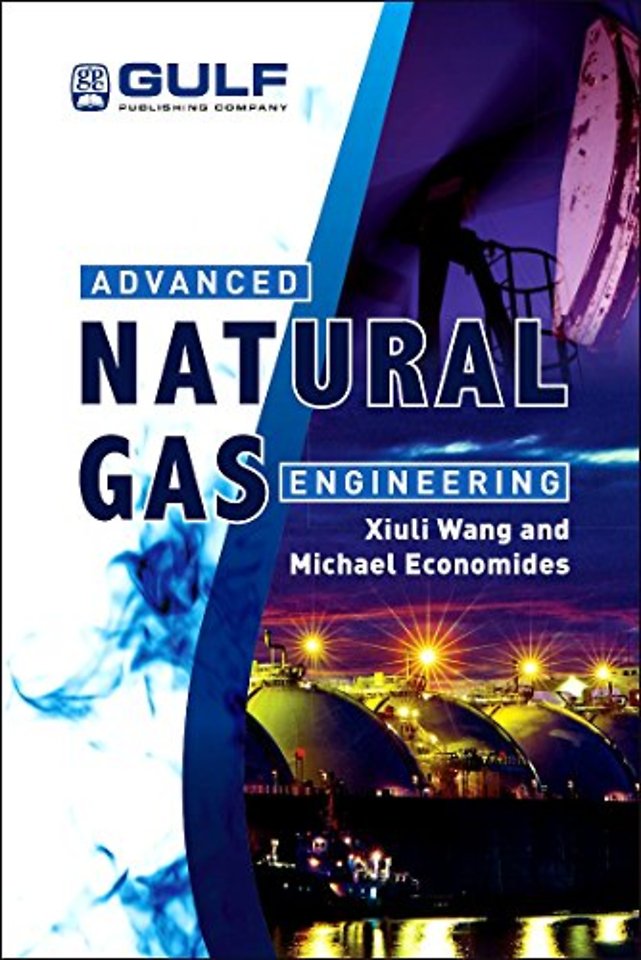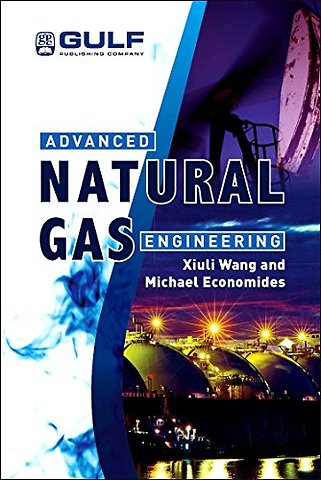<br>Preface</br><br>Reviews</br><br>List of Figures</br><br>List of Tables</br><br>List of Examples </br><br>1 Natural Gas Basics</br><br> 1.1 Introduction</br><br> 1.2 Geological Settings</br><br> 1.3 Natural Gas Origins and Accumulations</br><br> 1.4 Natural Gas Resources</br><br> 1.4.1 Nonassociated Gas</br><br> 1.4.2 Associated Gas</br><br> 1.4.3 Unconventional Gas</br><br> 1.5 Natural Gas Composition and Phase Behavior</br><br> 1.5.1 Dry- and Wet-Gas Phase Behaviors</br><br> 1.5.2 Retrograde-Condensate-Gas Phase Behavior</br><br> 1.5.3 Associated Gas Phase Behavior</br><br> 1.6 Natural Gas Properties</br><br> 1.6.1 Gas Specific Gravity</br><br> 1.6.2 Gas Deviation Factor</br><br> 1.6.3 Gas Density</br><br> 1.6.4 Gas Formation Volume Factor</br><br> 1.6.5 Gas Compressibility</br><br> 1.6.6 Gas Viscosity</br><br> 1.6.7 Useful Correlations</br><br> 1.7 Units and Conversions</br><br> 1.8 References</br><br>2 Unique Issues in Natural Gas Exploration, Drilling, and Well Completion</br><br> 2.1 Introduction</br><br> 2.2 Exploration</br><br> 2.3 Drilling</br><br> 2.3.1 Natural Gas Well Drilling</br><br> 2.3.2 Drilling Deep Wells</br><br> 2.3.3 Drilling Damage</br><br> 2.3.4 Gas Kick</br><br> 2.4 Well Completions</br><br> 2.4.1 Liquid Loading in Gas Wells</br><br> 2.4.2 Casinghead Pressure</br><br> 2.5 References</br><br>3 Natural Gas Production</br><br> 3.1 Introduction</br><br> 3.2 Darcy and Non-Darcy Flow in Porous Media</br><br> 3.3 Gas Well Inflow under Darcy Flow</br><br> 3.3.1 Steady State and Pseudosteady State Flow</br><br> 3.3.2 Transient Flow</br><br> 3.4 Gas Well Inflow under Non-Darcy Flow</br><br> 3.4.1 Turbulent Flow in Gas Wells</br><br> 3.4.2 Correlations for Turbulence in Vertical Gas Well</br><br> 3.5 Horizontal Gas Well Inflow</br><br> 3.6 Hydraulic Fracturing</br><br> 3.6.1 Hydraulic Fracturing Overview</br><br> 3.6.2 The Concept of Dimensionless Productivity Index</br><br> 3.6.3 Unified Fracture Design (UFD)</br><br> 3.6.4 Performance of a Hydraulically Fractured Well with Turbulence</br><br> 3.6.5 Fracturing Horizontal Gas Wells</br><br> 3.7 Well Deliverability</br><br> 3.8 Forecast of Well Performance and Material Balance</br><br> 3.9 References</br><br>4 Natural Gas Processing</br><br> 4.1 Introduction</br><br> 4.2 Natural Gas and Liquid Separation</br><br> 4.2.1 Gravity Separation Mechanism</br><br> 4.2.2 Three-Phase Separator Design</br><br> 4.3 Natural Gas Dehydration—Water Removal</br><br> 4.3.1 Water Content Determination</br><br> 4.3.2 Natural Gas Hydrates</br><br> 4.3.3 Adsorption Dehydration</br><br> 4.3.4 Absorption Dehydration</br><br> 4.4 Natural Gas Sweetening—Acid Gases Removal</br><br> 4.5 References</br><br>5 Natural Gas Transportation—Pipelines and Compressed Natural Gas</br><br> 5.1 Introduction</br><br> 5.2 Pipelines</br><br> 5.2.1 Pipeline Size</br><br> 5.2.2 Compression</br><br> 5.3 Marine CNG Transportation</br><br> 5.3.1 CNG Carriers</br><br> 5.3.2 Optimizing Vessel Capacity and Itineraries in CNG Transportation</br><br> 5.4 References</br><br>6 Liquefied Natural Gas (LNG)</br><br> 6.1 Introduction</br><br> 6.2 The LNG Process</br><br> 6.3 LNG Liquefaction</br><br> 6.3.1 Thermodynamic Analysis of LNG Processes</br><br> 6.3.2 Propane Precooled Mixed Refrigerant (PPMR™)/C3 MR Process</br><br> 6.3.3 Optimized Cascade LNG Process</br><br> 6.3.4 Single Mixed Refrigerant Loop Process</br><br> 6.3.5 Mixed Fluid Cascade Process</br><br> 6.3.6 Liquefin™ Process</br><br> 6.3.7 Dual Mixed Refrigerant (DMR) Process</br><br> 6.4 LNG Carriers</br><br> 6.5 References</br><br>7 Gas-to-Liquids (GTL)</br><br> 7.1 Introduction</br><br> 7.2 Why GTL?</br><br> 7.3 GTL Processes</br><br> 7.4 GTL Based on Direct Conversion of Natural Gas</br><br> 7.5 GTL Based on Indirect Conversion of Natural Gas</br><br> 7.5.1 Basics</br><br> 7.5.2 Natural Gas Reforming and Synthesis Gas</br><br> 7.5.3 Fischer-Tropsch Synthesis</br><br> 7.5.4 Product Upgrading</br><br> 7.6 GTL Economics and Outlook</br><br> 7.7 References</br><br> 7.8 Appendix—Catalysis (Bartholomew and Farrauto, 2005)</br><br>8 Underground Natural Gas Storage</br><br> 8.1 Introduction</br><br> 8.2 Types of Underground Storage</br><br> 8.3 Storage Measures</br><br> 8.3.1 Total Gas Volume and Injected Gas Volume in Storage</br><br> 8.3.2 Losses in Gas Storage</br><br> 8.3.3 Injectivity in Gas Storage Well</br><br> 8.4 Discussion</br><br> 8.5 References</br><br>9 Natural Gas Supply, Alternative Energy Sources, and the Environment</br><br> 9.1 Introduction</br><br> 9.2 The Great Energy Dilemma</br><br> 9.3 Advantages of Fossil Fuels</br><br> 9.4 Energy Interchangeability versus Inflexibility</br><br> 9.5 Regional Gas Supply Potential</br><br> 9.6 Alternatives to Natural Gas Fired Electricity</br><br> 9.6.1 Coal</br><br> 9.6.2 Nuclear</br><br> 9.6.3 Wind</br><br> 9.6.4 Solar</br><br> 9.7 Fundamentals of Electricity Generation from Alternative Energy Sources</br><br> 9.7.1 Coal</br><br> 9.7.2 Wind</br><br> 9.7.3 Nuclear</br><br> 9.7.4 Solar</br><br> 9.8 Economics of Electricity Generation from Different Energy Sources</br><br> 9.9 Environmental Impact of Fossil Fuels and Renewable Energy Sources</br><br> 9.9.1 Environmental Impact of Coal</br><br> 9.9.2 Environmental Impact of Nuclear Power Plants</br><br> 9.9.3 Environmental Impact of Wind Turbines</br><br> 9.9.4 Environmental Impact of PV Systems</br><br> 9.10 References</br><br>Nomenclature</br><br>Index</br>

